Discover 5 hidden attractions, cool sights, and unusual things to do in Hammerfest (Norway). Don't miss out on these must-see attractions: Hammerfest Church, The Polar Bear Society, and Museum of Reconstruction. Also, be sure to include Fuglenes in your itinerary.
Below, you can find the list of the most amazing places you should visit in Hammerfest (Finnmark).
Table of Contents
Hammerfest Church
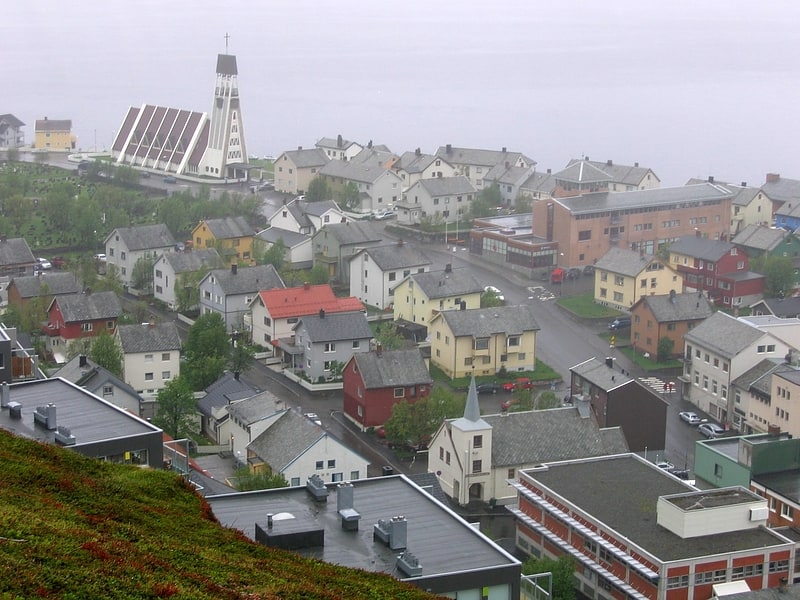
Also known as: Hammerfest kirke
Lutheran church in Hammerfest, Norway. Hammerfest Church is a parish church of the Church of Norway in Gamvik Municipality in Troms og Finnmark county, Norway. It is located in the town of Hammerfest. It is the church for the Hammerfest parish which is the seat of the Hammerfest prosti in the Diocese of Nord-Hålogaland. The white, concrete church was built in a long church style in 1961 using plans drawn up by the architect Hans Magnus. The church seats about 525 people.[1]
Address: Kirkegata 21, 9600 Hammerfest
The Polar Bear Society
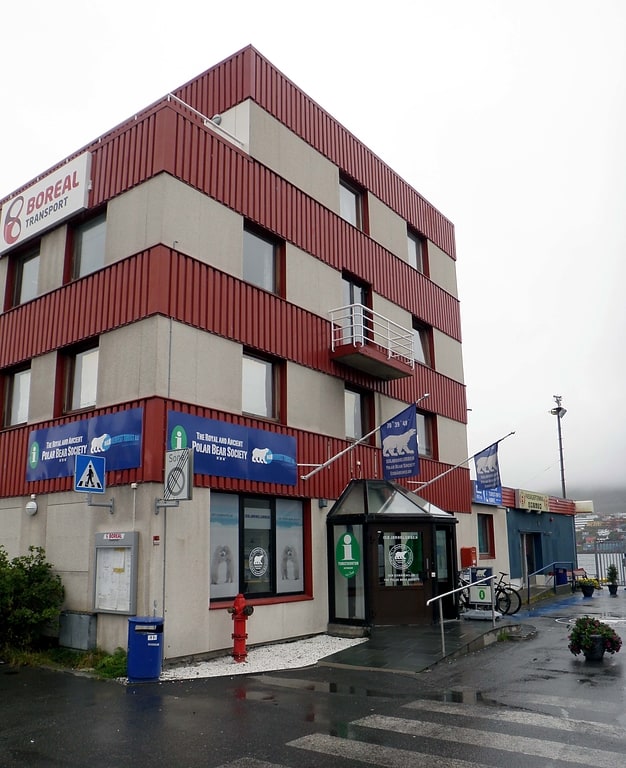
Museum in Hammerfest, Norway. The Royal and Ancient Polar Bear Society locates a small exhibition in the town of Hammerfest in Troms og Finnmark, Norway. The significance of the polar bear is that this animal is the town's mascot and heraldic crest.
For all its remoteness, Hammerfest has a long history as a trading port, and Polar Bear Club sets out to commemorate this. In the museum's single room are a variety of mementos of the early life of Hammerfest, including a profusion of stuffed animals, early Arctic hunting, traveling and camping equipment, and a gallery of photographs, paintings, drawings and writings of and from the town's history. These depict the town as it was in previous centuries, showing that as far back as the seventeenth century, this tiny town was a nexus for travelers and traders in the far north and a meeting point for the isolated people of North Norway, traders sailing up from southern Europe and hunters and traders coming west from the Arctic Ocean and Russia.
Founded in 1963 by two local businessmen, the Polar Bear Club is not particularly ancient. Primarily, it is a somewhat jokey amenity for tourists. Although entrance to the actual exhibition is free of charge, visitors are encouraged to join the Society, which is rewarded with a membership pack, the contents of which include a certificate signed by the actual mayor, a sticker, a membership card and a lapel pin made of silver and enamel. Since the only way to join is in person at the Polar Bear Society, this pin signifies as proof of visiting this remote place.[2]
Address: Hamnegata 3, 9600 Hammerfest
Museum of Reconstruction
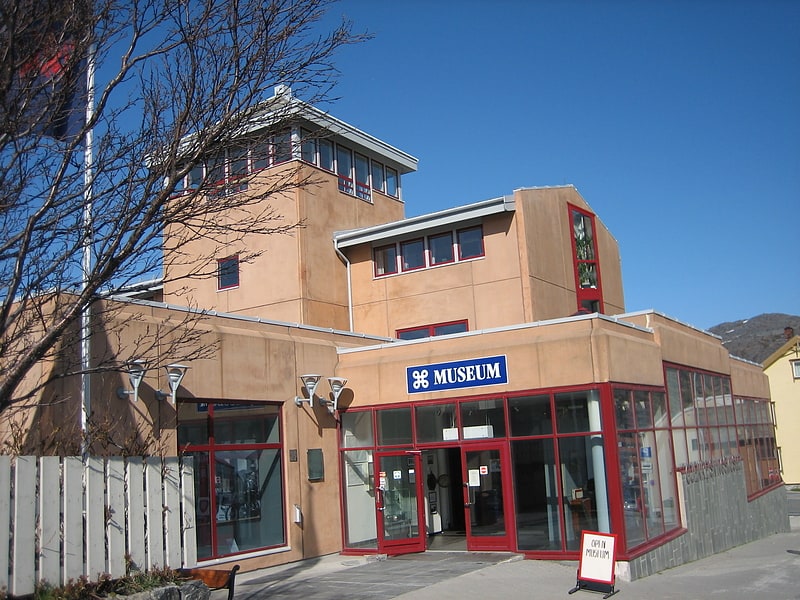
Also known as: Gjenreisningsmuseet for Finnmark og Nord-Troms
Museum in Hammerfest, Norway. The Museum of Reconstruction for Finnmark and North Troms is a museum in the town of Hammerfest, Norway.
As was much of Northern Norway, the entire town of Hammerfest was razed to the ground by the retreating Nazi German military forces at the end of World War II. The museum commemorates this event with a wide range of displays, including both photographs and many items from the town from around that time. The first part of the main sequence of exhibits, on the ground floor, depicts the events themselves; the second consists largely of a series of reconstructions of the town during and following its reconstruction. There are homes, workplaces and other such tableaux, composed mostly of authentic items retained from that time, clearly showing how shockingly basic life was at first as the town's residents rebuilt their homes and lives, literally and exactly from the ground up.
Since the locals knew the troops were coming and what they would do, there was a little time to prepare. The local barber's pride and joy was his authentic American barbershop chair, imported from Chicago before the war. As many people did with their most precious possessions, he wrapped the chair in tarpaulin and buried it in his garden. When the building was reconstructed some years later, he dug up the chair and it was proudly reinstated in his parlour, where it remained for some decades. Now, it is in the museum.
Later displays on the tour show how life progressed in the postwar years. Single-room dwellings housing whole families were gradually replaced with multiple rooms, then the standard of furnishings starts to rise. By the 1950s, there are Norwegian-language fashion magazines in the home, reflecting the fact that by this time there is an actual choice of furnishings, clothing and so on available and that people once again have enough disposable income to spend on non-essentials. This is arguably due to the rapid growth in the Norwegian economy around this time.
As the town slopes steeply away from its shore and harbour, and the museum is situated some way inland, the building's central tower is one of the town's tallest structures and commands panoramic views across the whole region. Each floor of the tower contains a photo gallery; these successively show the phases of architecture in the region.
Attached to the museum is a secondary, subsidiary museum concerning the history of telecommunications in Norway, especially the construction of the 19th Century CE telegraph system which linked the outlying regions of this vast and often hostile and nearly impassable country.
The museum is arguably of primary interest to Norwegian nationals, many of whom travel through Hammerfest when taking the Hurtigruten steamship line, whose ships call in there daily, all year round, on their way between Bergen and Kirkenes in the far east of the country. Since a typical visit is of only two or three hours, there is little time to visit both the Isbjørnklubben and the Museum of Reconstruction and to explore the town. Most of the displays in the main museum are labelled only in Norwegian. One can, however, borrow foreign language guidebooks (English, German, French, Spanish, Italian, Russian, Finnish and Sami). These are also displayed in the museums homepage www.gjenreisningsmuseet.no. The telecomms section is also multilingual.[3]
Address: Kirkegata 21, 9616 Hammerfest
Fuglenes
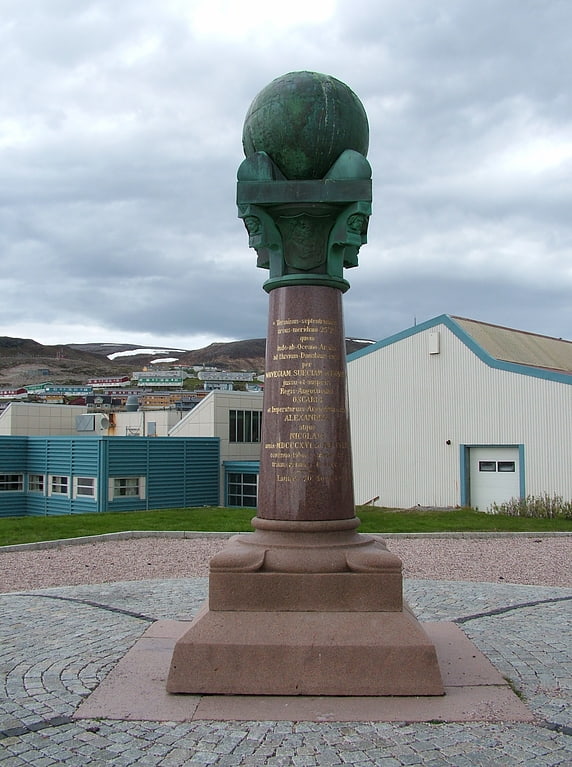
Fuglenes is a district in the municipality of Hammerfest in Norway. It is the location of the northernmost point of the Struve Geodetic Arc. It is a geodetic point, one of the 34 points selected for the World Heritage List. It was here that Friedrich Georg Wilhelm von Struve's surveys ended in 1852.[4]
St Michaels Catholic Church
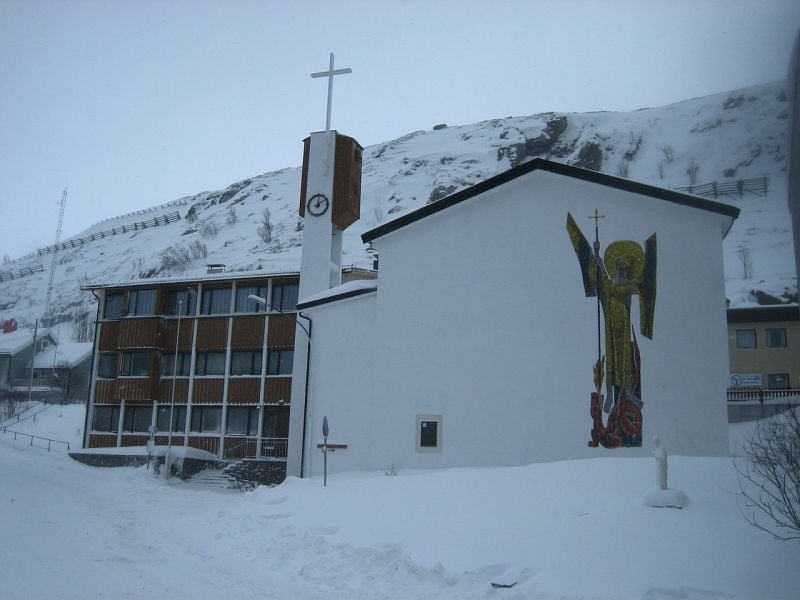
Address: Salsgata 52, 9600 Hammerfest, Hammerfest